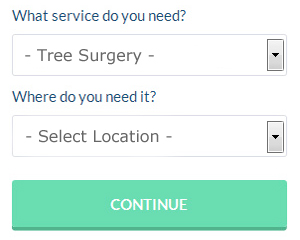Ore Tree Surgeons (TN35) East Sussex: An important feature of many properties and gardens in Ore, trees add substance, structure and style to what can sometimes be an unexciting and two dimensional area. However, when neglected or impacted by severe weather conditions, for instance high winds or flooding, trees can be a bit of an issue. Seeking the advice and guidance of an established tree surgeon in Ore, is the best option when work needs to be undertaken on your trees.
Employing non-qualified personnel for tree work or attempting to do it by yourself, could cause damage to property, harm your trees, or even lead to injury or death. However, tree work is certainly not a safe undertaking, even for expert tree surgeons, who are familiar with all the hazards. The reality is that tree surgery is among the most hazardous jobs in the United Kingdom, with an average of 3 deaths and 140 major injuries a year within the industry, hence it is definitely not safe work for amateurs.
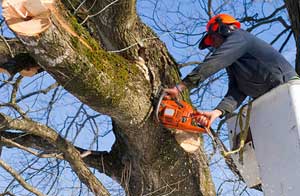
There's also a danger to life from damaged or poorly maintained trees in Ore, as around five people annually are killed in Britain by falling trees and branches. You could be liable to third-party compensation claims due to the consequences of your actions, if you hire somebody to carry out tree work and subsequently an injury occurs, or property is damaged. These are just some of the reasons why it is important to use a competent tree surgeon to work on your trees in Ore. (The figures given were sourced from HSE UK).
A competent Ore tree surgeon should be a signed up member of one or both of the 2 professional industry bodies found in Britain. You can view the professional status and membership of any tree surgeon on the websites of either the International Society of Arboriculture (ISA) or the Arboricultural Association (AA). To determine whether any specific tree surgeon has recognised ARB Approved Contractor status and has membership of either of these 2 organisations, you can check this webpage.
For assistance in arbitration and for advice and help at any stage during or after the tree work has been finished, you'll be able to speak to either of these trade associations.
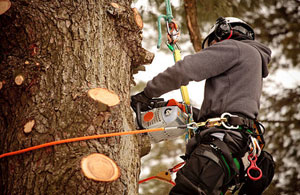
You shouldn't be afraid to decline the offer of an estimate from somebody who isn't on this directory, since at the end of the day, it's an approved contractor who you are actually looking for. You should try to get a minimum of three quotes from different companies in and around Ore when you are reassured of their professional memberships and accreditations. There are a number of important questions that you must ask whilst you are obtaining these quotations, and due to the risks involved in tree surgery work, you should make it clear that you need the answers. You should for example ask:
- How much insurance cover is provided? You shouldn't entertain a tree surgeon in Ore with less than five million pounds public liability insurance as outlined by the AA and ISA.
- Can I inspect the quality of your work by contacting a person you have worked for recently? Independently examining any recent work is always recommended.
- Can you provide a quotation in writing? You must NEVER settle for just a verbal quote. Only ever accept a quote in writing.
- Can you show documents to demonstrate that you have the recommended qualifications, membership of the AA or ISA, and also a certificate for chainsaw use from the NPTC/LANTRA? It's required by law that any tree worker who uses a chainsaw must have gained a NPTC/LANTRA certificate. A trained Ore tree surgeon may hold City and Guilds National Diplomas and Certificates in Arboriculture.
The written quotation must include clear and concise specifics of the tree work being undertaken. It should state whose responsibility it is to remove debris, tree branches and stumps, and should also include details about any trees which could be protected in law, and the steps needed to obtain permission to carry out work on them. Verify that VAT has also been included on the quote. It's important to realise that you've got a responsibility to employ only competent tradespeople to work on your trees and property.
PRIOR TO WORK - The tree surgeon that you have selected in Ore, will be able to investigate whether any of your trees are under a protection order, and will check with the local authority if the go-ahead for any tree surgery is possible. To ensure the safety of the public, even protected trees require maintenance in order to cut back dead or damaged wood, so discovering that a tree is protected does not mean that you are unable to carry out essential work.
If your property in Ore is inside a conservation area then no less than six weeks written notice must be given to the Local Planning Authority (LPA) prior to any work being performed. This is only applicable to trees with a stem diameter of over 75 millimetres in diameter, at a point 1.5m from ground level. If the pruning or thinning of a protected tree's branches are needed to promote and sustain growth, written notice is also not necessary.
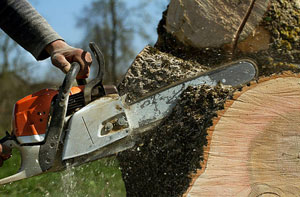
Your Ore tree surgeon will decide on the necessary remedial treatment and how the required outcome can be achieved with safety in mind after carrying out a thorough assessment of your trees health. Your property, public areas and any part of a neighbour's property that could be impacted by falling branches will all be given a risk assessment. At this stage, the amount of workers required and the level of protection needed will also be ascertained. This is both PPE in addition to other safety precautions to keep property and the general public safe from damage or harm.
ON THE DAY OF WORK - To keep passers-by and unauthorised persons away from the work area, barriers, safety measures and cones should be put in place before any cutting of branches, climbing or tree felling begins. Where there's the chance of debris and branches crashing onto a public highway, it might be necessary to stop the traffic briefly.
Different degrees of protection will be needed by the tree surgeon according to what work needs to be carried out. When doing basic work with a chainsaw, to prevent serious cutting injuries to the hands, legs and torso, they will at a bare minimum be wearing specialist protective clothing. All operatives involved in the work should be wearing head and eye protection, and high-vis clothing, at all times.
Additional personnel will usually be required to help in the removal of high branches and heavy sections of tree trunk, especially if any working at height is involved, and where climbing equipment and ladders are being deployed. It's recommended that you inform your next door neighbours of the need for unhindered access, as a skip or other means of transporting the waste materials away will be parked as close to the work area as possible.
UPON COMPLETION OF WORK - The whole site can be cleared of all debris, and all the waste and branches can be hauled away, when all the tree work has been finished. A certificate of work done should then be prepared by your tree surgeon, particularly when the trees are protected, which can be signed off and a copy presented to you. Highways and footpaths can then be re-opened, and any safety measures places in public areas removed.
If you've got any complaints about the completed work, you should get them rectified immediately by first of all taking them up with your tree surgeon. If any further arbitration is required, and your tree surgeon is an approved member of a trade body, you can obtain guidance and help from the International Society of Arboriculture or the Arboricultural Association in order to come to an acceptable solution.
Local Ore tree surgeons will likely have the telephone dialling code 01424 and the postcode TN35. They'll operate in Ore itself, along with nearby areas such as Brede, Whatlington, Bexhill-on-Sea, Icklesham, Crowhurst, St Helens, Hastings, Fairlight, Catsfield, Sedlescombe, Winchelsea, Broad Oak, Guestling, Udimore, Westfield, Mountfield, and these postcodes: TN35 5EF, TN35 5EX, TN35 4JN, TN35 5BS, TN35 5ES, TN35 5EJ, TN35 4LG, TN35 5GG, TN35 5DE, TN35 5ET. Verifying this will ensure that you access a local tree surgeon. Ore property owners will be able to utilise these and numerous other tree related services.
If you require this sort of assistance it is certainly best to use an accredited local tree surgeon. Ore property owners can benefit greatly from the expertise that a fully trained professional can offer.
Emergency Tree Surgery Ore
There might be situations where you have to contact an emergency tree surgeon, if you have trees growing in your Ore garden. When there are strong winds and gales, tree surgeons in Ore notice a surge in emergency call-outs, and some of them offer a 24/7 service. Even though the odds of a whole tree toppling over are low, there is more potential for branches snapping off and crashing to the ground below, during windy weather. When tree limbs and branches start falling squashed sheds, damaged fences, busted garden furniture and smashed greenhouses are a common outcome, so avoidance is better than having to contend with the aftermath.
Naturally, the local council in Ore will also occasionally need to call out emergency tree care services, when sizeable branches fall onto railway tracks, public pathways and roads.
Even when the emergency tree work has been completed, a tree that's lost a lot of limbs might need to be "re-balanced", and this could be done for aesthetic reasons or because the tree will now be lopsided, with more weight on one side than the other, possibly leading to further issues. A local Ore tree surgeon who provides 24 hour emergency services should be called in to handle all of these problems, and you shouldn't try to tackle them yourself. (Tags: Emergency Call-Outs Ore, Emergency Tree Care Ore, Emergency Tree Surgery Ore, Emergency Tree Services Ore).
Wood Chipping Ore

So as to process the large volume of tree limbs, branches and vegetation that are the result of their work, the majority of Ore tree surgeons will make use of wood chipping machinery. Although it largely depends on the equipment that's being used, these impressive wood chipping machines can gobble up as much as forty tonnes of material per hour, and even the more commonly used machines can process around five tonnes per hour, or literally as much as you are able to feed into them.
Having lots of uses such as ecosystem restoration, mulch for gardens, landscaping, wood pulp, biomass solid fuel, garden pathways, weed prevention and cultivating mushrooms, the chipped down branches are also a lot easier to transport.
Most tree surgeons in Ore will be willing to let you have the wood chippings which are generated during the tree work, if you've a good use that you want to put them to, if not they will normally take them away to use on other landscaping projects. As I'm sure you'll appreciate by reading this write-up, tree surgeons are a good source for wood chippings which you can use in your garden in Ore, whether you actually need tree surgery or not. Some tree surgeons will want paying for wood chips, particularly if you want them delivered, others will allow you to have them for free.
Well known brands of wood chipping equipment include Timberwolf, T-Mech, Forest Master and Crytec. (Tags: Wood Chipping Services Ore, Wood Chipping Equipment Ore, Wood Chipping Ore, Wood Chips Ore).
Firewood/Logs Ore
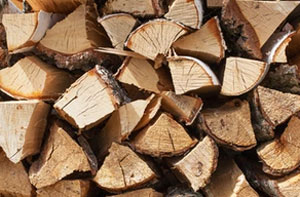
If you happen to be in the market for logs and firewood in Ore, tree surgeons are normally an excellent source for this particular commodity. Since the majority of their days are spent cutting down trees and branches, it is hardly surprising that many would adopt this as a sideline.
Recently felled branches and logs are often available "free to collector" from certain Ore tree surgeons, who are just pleased to get rid of them. Other local tree surgeons, who have enough room to store them, will dry and season the logs and sell them by the bag, tonne or lorry load, and will sometimes deliver them for you.
Logs with a moisture content of below 20 percent are ideal for burning on your open fire or log burner, and these will have been dried out for a year or more. The advantage of getting logs from tree surgeons, is that these are most likely to be assorted hardwood logs, which will provide heat for a number of hours, giving a sustained burn. Softwood logs are terrific for getting a fire started, so if you can get your hands on some of these too, that is going to be useful. (Tags: Logs and Firewood Ore, Hardwood Firewood Ore, Firewood Ore, Firewood Logs Ore).
Tree Stump Removal Ore
When you've had a tree chopped down from your garden in Ore, unless arranged with the tree surgeon, you'll be left with a tree stump to deal with. In some circumstances it may be feasible for you to just leave the stump exactly where it is until such time as it breaks down and rots away by itself. However, a large tree stump could take many years to break down, and may even produce suckers in an attempt to restore itself to its former glory. Protruding stumps can also be a trip hazard, can attract unwanted pests, and be an eyesore as well.
If you decide to get rid of the stump altogether, there are a number of ways to achieve this, however they fall under 2 primary options stump removal or stump grinding. Below we will be investigating the stump removal option.
There are in essence three techniques for removing a tree stump - burning, chemical treatments and digging out by hand. If you want to have a go at removing the tree stump for on your own, you could pick any one of these methods when suitable. If you are hiring a tree surgeon in Ore, they'll generally plump for the aforementioned stump grinding option.
Chemical Stump Removers: If you settle on the chemical removal option, you will need to purchase Vitax SBK Stump Killer, Resolva Xtra Tough Tree Stump Killer or Roundup Tree Stump Remover. Avoid skin contact when utilising these chemical solutions, and also avoid inhaling. You should stick rigidly to the maker's directions, for applications, quantities and timings. This is not a short term resolution, and it can take quite a few weeks for the tree stump to rot totally, after which a spade and an axe can be used to chop it up and remove it.
Stump Burning Techniques: As it may be at variance with local legislation and can certainly be quite dangerous, stump burning is not really recommended. Should you choose this method, great care must be taken. It comprises drilling a few 1" holes in the stump and continually filling and topping up the holes with vegetable oil and left to sit for aa few days. You should then heap charcoal around the tree stump and set it alight. A fire such as this shouldn't be left unattended, and should be monitored until safely burnt out. As soon as the burning process is complete, you should make certain that the fire is fully extinguished, and when it has completely cooled down you will be able to dig out and remove the remnants of stump and roots.
An alternate method is digging out all the soil from beneath the tree stump and setting a fire in the void created underneath. None of these stump burning solutions should should be considered appropriate if the tree stump is close to a building, fences or other trees.
Hand Stump Digging: Digging out a tree stump by hand will require a few tools such as a handsaw, a pointed shovel, loppers and a chainsaw. It involves digging down to uncover the roots, cutting the roots with loppers or saws, and ultimately releasing the stump, or making it easier to pull out. For the final freeing up process you might need to get hold of a cable ratchet winch. This can be tiring and tedious work, and should never be attempted by anyone who's not physically fit and up to the job.
Skills and Knowledge Needed by a Tree Surgeon in Ore
- Have good customer service skills.
- Have a good understanding of public safety.
- Physical skills such as movement and co-ordination.
- Be patient and have the ability to remain calm and focused in stressful circumstances.
- Being able to work alongside other people.
- Have essential computer skills and know how to perform tasks with handheld devices.
- Have the ability to maintain, repair and use tools and equipment.
- Be professional and able to complete tasks within a specified time frame.
- Be able to work with your hands.
- Have an organised approach to work.
- Be alert to the dangers and complexities involved in all areas of work.
Invasive Tree Roots Ore
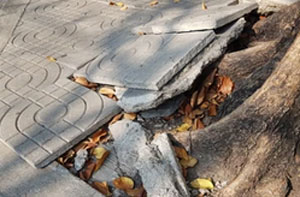
Certain trees have exceptionally intrusive roots, and might be troublesome if they're growing too near to your home in Ore. Problems that can arise include damaged foundations, cracked patios and blocked drains. Very invasive roots are found in species like willows, elms, maples and sycamores.
If you have plans to grow any new trees on your property, it's best to make sure they are positioned a good distance from paths, patios, your sewerage system and your home. If existing trees are growing too close to your home and are causing some of these problems, you must get hold of a tree surgeon in Ore, to see what can be done.
To avoid the chance of seriously harming the health of your tree or even killing it off altogether, you should not simply chop off the offending tree roots in an effort to solve this yourself. A seasoned tree care specialist in Ore will know precisely which roots can be cut, and which roots should be left, so the damage is minimised, and the tree can still get sufficient water and food to survive and thrive.
Tree and shrub roots regularly cause structural issues in subterranean drainage systems, especially when you consider that sewage pipes provide a constant source of nutrients and water. Minute roots can easily invade a drainage system's joints, and once established develop into huge root balls which can cause joint failure and blockages. Many Ore tree surgeons will offer high quality root removal services, which will either involve using high pressure jetting, mechanical equipment or manual rodding. (Tags: Drain Root Removal Ore, Tree Root Problems Ore, Invasive Tree Roots Ore, Problematic Tree Roots Ore).
Dutch Elm Disease
No longer the concern that it was at one time, Dutch Elm Disease (Ophiostoma novo-ulmi) has killed many millions of precious elm trees right through Great Britain over the last five decades or more. Caused by the Ophiostoma novo-ulmi fungus which is spread by the elm bark beetle (Scolytus), Dutch Elm Disease was imported into the United Kingdom accidentally in the nineteen sixties from North America (Canada).
After arriving, it quickly spread through the movement of elm products such as bark mulch, crates, saplings, and firewood logs with the bark on. This dreadful disease did not just affect elms in the United Kingdom, but also devastated elm stocks in mainland Europe and North America. Although the origins of DED are as yet uncertain, the suspicion is that it first originated in Asia (possibly Japan).
The signs of DED typically first materialize in early summer, and can be recognised by:
- Dark rings or spots in the cross-section of twigs.
- Clusters of leaves turning yellow, wilting and falling.
- Twigs turning into a "shepherd's crook".
- New shoots that die back from the tips.
The spread of DED has been slowed by the felling of infected, dead and dying trees, which has effectively decimated the elm bark beetle's favourite habitat. The propagation of young saplings that up to now have proven resistant to DED is now being undertaken.
You can request a diagnosis from the Tree Health Diagnostic and Advisory Service (THDAS), or you can speak to your neighbourhood tree surgeon for advice and guidance, if you've got elm trees in your garden in Ore, and have suspicions that they may be infected with Dutch Elm Disease.
Trees affected - Ulmus and Zelkova.
Agent of spread - beetles of the Scolytus and Hylorgopinus genera.
Cause - fungi Ophiostoma Ulmi & Ophiostoma Novo-Ulmi.
(Tags: Spotting Dutch Elm Disease, Dutch Elm Disease Ore, Dutch Elm Disease Signs).Tree Transplanting Ore
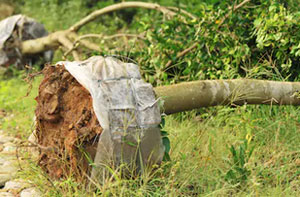
Moving fully-grown trees is an intricate, yet relatively straightforward process nowadays, mainly due to modern vehicle mounted tree spades, tree lifting equipment and other specialised tools. Mature trees can be replanted onto new properties to accomplish an instantly landscaped look, or out-of-control wooded areas could be thinned without the need to stoop to tree felling.
Moving trees in Ore can be completed right throughout the year, however during the warmer summer months the soaking of the ground becomes especially vital so as to cause the minimum amount of stress on the tree's root-ball. Removing a mature tree will involve a mechanical tree spade burrowing down and encompassing the tree's root ball, before raising the whole tree, uninjured, from the soil. The uplifted tree can then be stored temporarily before its re-planting in a new location.
If you intend to move a tree from ground that's got a preservation order upon it, an experienced tree moving contractor in Ore can communicate with relevant authorities to approve transplanting in a suitable location. You will be able to find tree transplanting services in Brede, Whatlington, Bexhill-on-Sea, Icklesham, Crowhurst, St Helens, Hastings, Fairlight, Catsfield, Sedlescombe, Winchelsea, Broad Oak, Guestling, Udimore, Westfield, Mountfield, and Ore. (Tags: Tree Replanting Ore, Tree Moving Ore, Tree Transplanting Ore).
Coming Soon: Tree pruning Ore.
Tree Surgery Tasks Ore

Ore tree surgeons can generally help you with fruit tree pruning, stump removal Ore, crown raising, tree felling, pollarding Ore, tree pruning, shielding trees from grazing animals, tree cutting Ore, tree lightening protection, damage restoration, tree lopping, stump grinding, root pruning, crown thinning, tree reduction Ore, tree reshaping, hedge lowering Ore, emergency tree surgery Ore, site clearance, crown lifting Ore, safety inspections Ore, tree surveys, woodchipping, dead wooding, formative pruning, root flare exposure, professional tree care, drop crotching in Ore, tree staking Ore, tree planning Ore, tree waste removal, tree bracing, vegetation management, domestic tree care Ore, eco plug treatments and other tree surgeon services in Ore, East Sussex. These are just a small portion of the tasks that are performed by a tree surgeon. Ore companies will be delighted to keep you abreast of their entire range of services.
Obtaining Advice and Guidance
To make certain that you employ a tree surgeon or arborist who's both up to the job and who'll not cause irreparable damage to your trees, there are a number of questions that you need to ask when searching for a tree surgeon in Ore. Relevant questions ought to be along the lines of: Are you a registered member of a trusted professional association (such as The International Society of Arboriculture or the Arboricultural Association)? Will you provide me with a quotation in writing? Do your working practices match the BS3998 British Standard? Can you give references from past customers? Do you have employment and public liability insurance? Do you and your employees have the required certificates and qualifications (for using chainsaws and tree management)? You ought to think twice about hiring a tree surgeon if you don't receive positive answers to any of those simple questions.

To find tons of helpful info regarding ways to choose a great tree surgeon, coupled with a comprehensive directory of competent tree surgeons in Great Britain, you can visit the Arboricultural Association website. Another website offering a "find a tree surgeon (arborist)" tool and a "verify tree surgeon credentials" tool, is the International Society of Arboriculture, where there is obviously a lot more information regarding arboriculture (tree surgery). You could also have a look at the Wikipedia "Arborist" page here, to read more info on tree surgery as a profession. You could also try using one of the trade portals such as My Builder or Rated People, where customer reviews are available and required credentials have been already verified, to save a lot of time and effort. Trustmark is a Government financed organisation that's also an important stop-off-point for finding dependable trades-people.
Tree Surgeons Near Ore: Also find: Sedlescombe tree surgeons, Crowhurst tree surgeons, Winchelsea tree surgeons, Catsfield tree surgeons, Udimore tree surgeons, Hastings tree surgeons, Fairlight tree surgeons, Icklesham tree surgeons, Bexhill-on-Sea tree surgeons, Brede tree surgeons, St Helens tree surgeons, Guestling tree surgeons, Broad Oak tree surgeons, Westfield tree surgeons, Mountfield tree surgeons, Whatlington here. The majority of these places are covered by a local tree surgeon. Ore householders can get quotations by going here.
Tree Care Services Ore
- Ore Stump Grinding
- Ore Tree Pollarding
- Ore Woodchipping
- Ore Woodland Clearances
- Ore Root Decompaction
- Ore Arboriculture
- Ore Crown Removal
- Ore Shrub Maintenance
- Ore Cable Bracing
- Ore Tree Reshaping
- Ore Hedge Planting
- Ore Tree Surveys
- Ore Stump Treatment
- Ore Tree Replanting
Tree Surgeons Around Ore: In Grove Road, The Broadway, Mill Lane, Pinders Road, Middle Road, Brightling Avenue, Brackendale, Canute Road, Mill Close, Nook Close, School Road, Clifton Road, New Road, Fairlight Road, Barley Lane, Rock Close, Crowborough Road, Hemingford Rise, Richland Close, Winchelsea Lane, Fairlight Avenue, and in these local Ore postcodes: TN35 5EF, TN35 5EX, TN35 4JN, TN35 5BS, TN35 5ES, TN35 5EJ, TN35 4LG, TN35 5GG, TN35 5DE, TN35 5ET, tree surgeons were recently carrying out tree surgery jobs. These locations recently saw activity by a local tree surgeon. Ore householders received dependable and top notch tree surgery services in every case.
 Tree Surgeon Ore
Tree Surgeon Ore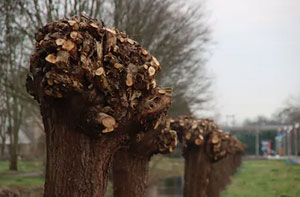 Tree Care Ore
Tree Care Ore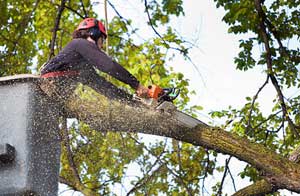 Tree Surgery Ore
Tree Surgery OreMore East Sussex Tree Surgeons: East Sussex tree surgeons: Crowborough, Brighton, Ringmer, Lewes, Ore, Battle, Eastbourne, Seaford, Hastings, Uckfield, Heathfield, Peacehaven, Willingdon, Forest Row, Hailsham, Portslade, Wadhurst, Westham, Bexhill-on-Sea, Rye, Polegate, Telscombe, Newhaven and Hove.
To obtain local info relating to Ore, East Sussex go here
Tree Surgery TN35 area, 01424.
More Trades: Gate Fitters - Gutter Cleaning - Tilers - Carpet Fitters - Carpenters
Tree Surgeons Ore - Arboriculturalist Ore - Tree Pruning Ore - Tree Management Ore - Tree Surgeon Near Me - Tree Surgeon Ore - Forest Management Ore - Tree Care Ore - Tree Felling Ore




